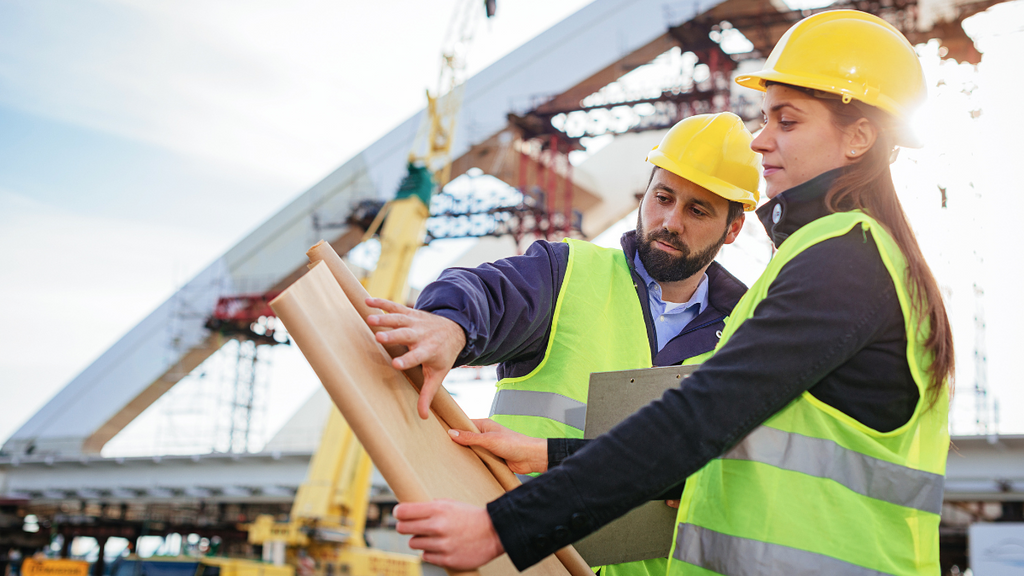What Does Geotheta Do?
What Does Geotheta Do?
Blog Article
Rumored Buzz on Geotheta
Table of Contents4 Simple Techniques For GeothetaFascination About GeothetaHow Geotheta can Save You Time, Stress, and Money.Things about GeothetaHow Geotheta can Save You Time, Stress, and Money.

They conduct site examinations, gather examples, carry out research laboratory tests, and examine data to assess the suitability of the ground for construction jobs - Tailings Engineer. Based upon their searchings for, geotechnical designers supply referrals for structure design, slope stability, preserving frameworks, and mitigation of geotechnical hazards. They team up with various other specialists, such as designers, structural engineers, and building and construction groups, to make sure that geotechnical considerations are incorporated right into the total job layout and implementation
By analyzing the actions and residential or commercial properties of dirt and rock, they can determine prospective geotechnical hazards such as landslides, soil negotiation, or slope instability. Their experience aids prevent failings or mishaps that can endanger lives and residential property. Below are some detailed responsibilities and responsibilities of a geotechnical designer: Site Investigation: Geotechnical engineers conduct site investigations to collect data on subsurface problems.
They analyze the data to recognize the residential properties and actions of the dirt and rock, including their strength, leaks in the structure, compaction attributes, and groundwater problems. Geotechnical Analysis and Style: Geotechnical engineers analyze the information gathered throughout website investigations to assess the security and viability of the website for building and construction projects. They perform geotechnical calculations and modeling to review aspects such as bearing ability, settlement, slope stability, lateral planet pressures, and groundwater flow.
Some Known Incorrect Statements About Geotheta
Foundation Layout: Geotechnical engineers play an important duty in making foundations that can safely support the desired framework. They examine the soil problems and tons needs to determine the proper foundation type, such as superficial foundations (e.g., footings), deep foundations (e.g (https://allmyfaves.com/geotheta?tab=Geotheta)., piles), or specialized strategies like soil renovation. They take into consideration elements such as settlement limitations, bearing capability, and soil-structure interaction to create optimum structure designs
They examine building and construction plans, monitor site activities, and conduct area assessments to verify that the design referrals are complied with. If unexpected geotechnical concerns emerge, they examine the circumstance and give referrals for remediation or changes to the layout. Risk Assessment and Mitigation: Geotechnical designers analyze geotechnical threats and threats connected with the task site, such as landslides, liquefaction, or soil disintegration.

Collaboration and Interaction: Geotechnical designers work very closely with various other specialists involved in a job, such as additional resources designers, architectural designers, and building and construction teams. Efficient interaction and cooperation are important to incorporate geotechnical considerations into the general project layout and building process. Geotechnical engineers provide technological competence, answer questions, and make certain that geotechnical requirements are met.
The 30-Second Trick For Geotheta
Here are some kinds of geotechnical designers: Foundation Designer: Foundation engineers focus on designing and examining structures for frameworks. They examine the soil conditions, tons needs, and website characteristics to identify one of the most ideal foundation type and style, such as shallow structures, deep structures, or specialized strategies like pile foundations.
They examine the elements influencing incline stability, such as dirt buildings, groundwater conditions, and slope geometry, and create techniques to stop slope failings and reduce dangers. Earthquake Engineer: Earthquake designers focus on assessing and creating frameworks to withstand seismic forces. They evaluate the seismic threat of a site, assess dirt liquefaction capacity, and establish seismic style requirements to ensure the safety and durability of frameworks throughout earthquakes.
They carry out area testing, collect examples, and assess the collected data to identify the dirt buildings, geologic developments, and groundwater problems at a website. Geotechnical Instrumentation Designer: Geotechnical instrumentation engineers concentrate on tracking and measuring the actions of soil, rock, and structures. They install and keep instrumentation systems that keep track of aspects such as dirt settlement, groundwater levels, incline movements, and architectural variations to examine performance and supply early cautions of prospective problems.
Our Geotheta Diaries
They carry out examinations such as triaxial tests, combination examinations, direct shear examinations, and leaks in the structure examinations to collect data for geotechnical analysis and design. Geosynthetics Designer: Geosynthetics engineers concentrate on the design and application of geosynthetic products, such as geotextiles, geogrids, and geomembranes. They make use of these materials to enhance soil security, reinforce inclines, provide drain options, and control erosion.
They have a tendency to be investigatory people, which suggests they're intellectual, introspective, and analytical. They are curious, systematic, sensible, logical, and sensible. Some of them are likewise social, implying they're kind, generous, cooperative, individual, caring, handy, understanding, tactful, and friendly - Geo Tech Engineer.
In the office environment, geotechnical designers make use of specialized software application tools to perform calculations, create layouts, and examine information. They prepare records, testimonial task specs, communicate with clients and group members, and coordinate task activities. The office setting provides a helpful setting for research study, analysis, and partnership with other professionals involved in the task.
Get This Report about Geotheta
They frequently check out project sites to conduct site examinations, evaluate geotechnical conditions, and gather information for analysis. These brows through entail traveling to different places, often in remote or challenging surfaces. Geotechnical designers may do dirt tasting, conduct tests, and display building tasks to guarantee that the geotechnical facets of the project are being applied correctly.
Geotechnical designers additionally work in specialized geotechnical laboratories. Geotechnical lab designers function thoroughly in these atmospheres, dealing with screening tools, operating instruments, and tape-recording data.
Report this page